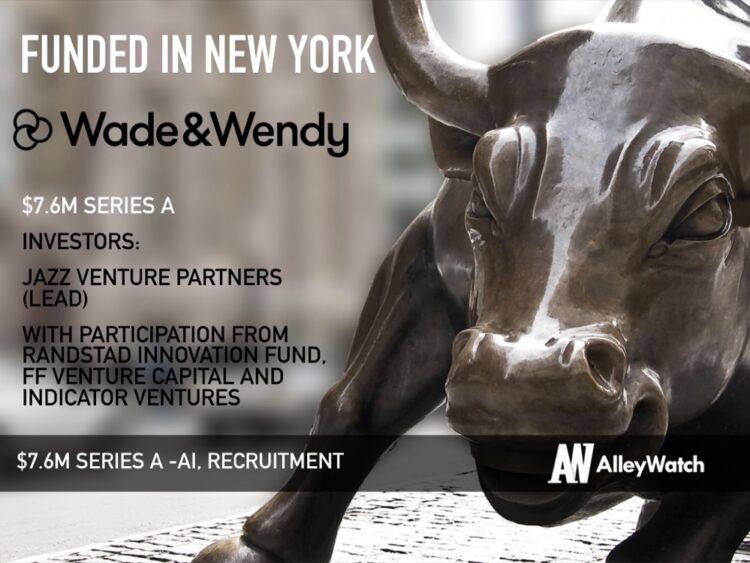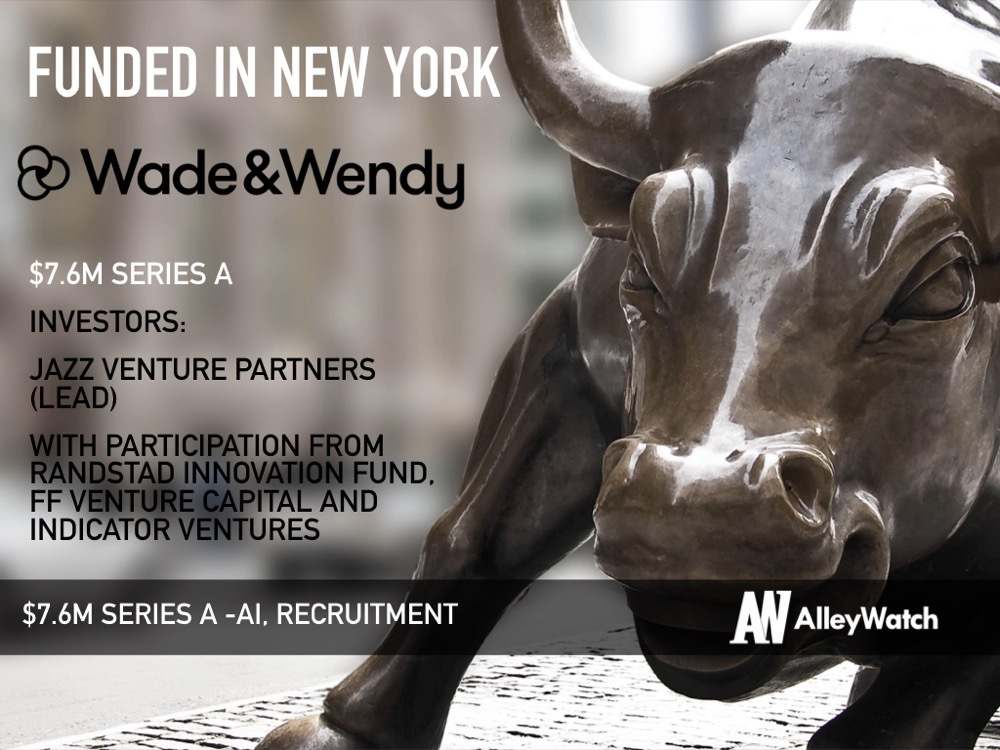Advances in technology have made applying for a job easier than ever before. Yet the same technology has made the jobs of recruitment professional more difficult given that there has been an influx of candidates that need to be managed. Enter Wade & Wendy. It’s an AI-powered chatbot that offers automation for both employers and job seekers. Wendy serves as the front line resource for hiring managers allowing them to offload repetitive tasks associated with initial processing of candidates. The ability of companies to hire effectively and quickly is the lifeblood of any growing business and this platform ensures that you are able to do more, faster with AI. Wade on the other hand serves as a resource for job candidates, helping them streamline the process of finding the perfect employment opportunity. The
AlleyWatch had the chance to sit down with CEO and Founder Drew Austin to learn more about the effects of automation in the recruitment business, Wade & Wendy’s future plans, and the company’s most recent round of funding.
Who were your investors and how much did you raise?
We raised $7.6 million in a Series A. It was led by JAZZ Venture Partners, with participation from existing investors Randstad Innovation Fund, ff Venture Capital and Indicator Ventures.
Tell us about the product or service that Wade & Wendy offers.
Wade & Wendy supports companies in acquiring talent, converting job seekers into applicants, and making informed recommendations throughout the recruiting process. Wendy joins recruiting organization as an AI Recruiting partner, responsible for engaging passive candidates, screening active applicants, and automatically coordinating next steps with qualified and interested talent. Wade acts as an AI Career advisor for talent that presents personalized job opportunities and career insights based on the individuals work history, skills and interests.
What inspired you to start Wade & Wendy?
I started my career as a recruiter and spent about 5 years working in the industry. While I loved the feeling of helping candidates find the right work and assisting companies build great teams, I felt the job was highly inefficient, unscalable and flawed. I spent too much time on repetitive, robotic tasks which inhibited me from providing candidates an optimized personal experience. From my early research, I found that many recruiters had the same pains and feelings as I did, so I set out to solve the problem.
How is Wade & Wendy different?
The core difference between Wade & Wendy and other products in the market comes back to how we think about solving the pain of recruiters. Recruiters don’t need another tool making their process more efficient or organized, they need to offload work and tasks so they can focus on higher priority responsibilities. We are the only AI platform operating as a full desk recruiter, responsible for sourcing, screening and evaluating talent.
 What market does Wade & Wendy target and how big is it?
What market does Wade & Wendy target and how big is it?
We target companies that seek substantial growth, whether it’s a late stage tech venture that has a small recruiting team and many seats to fill, or a large enterprise organization with a substantial recruiting team that is bogged down by too many applicants. We are domain agnostic as to the types of roles Wendy supports.
What’s your business model?
We have a credits model. We understand companies recruiting needs go through ebbs and flows, so we wanted to create a flexible model that is aligned with the hiring needs of our clients. When a company utilizes a credit that they have purchased, they can direct Wendy to source or screen talent for a given role for up to 30 days. She can work on as many roles as the company needs at a time.
The company has signed a key partnership with Randstad Sourceright. Would you please tell us about that?
The relationship with Randstad has been growing since ever since our first year as a company. We started working with them on various pilot programs, supporting their RPO customers across various industries and verticals. After completing a series of pilot programs, we entered into an extended agreement to expand our programs to new enterprise organizations.
What was the funding process like?
It was much easier raising a Series A, than raising our seed round. When I was first pitching an AI Recruiting Chatbot, the term chatbot was not understood at all. Now we can demonstrate the value we are delivering for clients so it made things easier.
What are the biggest challenges that you faced while raising capital?
We are still early in our lifecycle. Enterprise recruiting deals take time to close and to measure performance, so we had limited data to back up our claims. This forced us to only work with investors that understood our vision and saw the potential in the platform from the early engagements we were supporting.
What factors about your business led your investors to write the check?
We have an incredibly experienced team. We have a product in market and are working on a massive market with a business problem that makes sense. We have proprietary technology and collect proprietary data that creates defensibility that investors understood.
We have an incredibly experienced team. We have a product in market and are working on a massive market with a business problem that makes sense. We have proprietary technology and collect proprietary data that creates defensibility that investors understood.
What are the milestones you plan to achieve in the next six months?
Right now, our focus is continuing to increase our platform’s ability to scale to continue to support the growing needs of our customer base. From there we have quite a few user experience enhancements we have planned to incorporate into the platform based on the vast amount of feedback we have received. Lastly, we plan to work towards opening up our Wade beta again to an initial class of users, enabling job seekers to have their own personalized recruiter and career advisor working for them powered by AI.
What advice can you offer companies in New York that do not have a fresh injection of capital in the bank?
Build something. That’s first and foremost. Help paint the picture of the vision with something investors can touch. Next, try and sell it, get a couple of people to demonstrate people will pay for the vision you have demonstrated. Lastly, pitch, fail, iterate, ask for an intro, and repeat, until you find your lead. Once you do, put the foot on the gas, because fundraising in NYC is a momentum game.
Where do you see the company going now over the near term?
We will focus on product development and customer adoption.
What’s your favorite restaurant in the city?
Carbone




